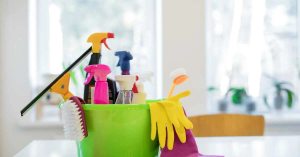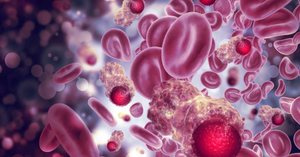The shedding of baby teeth is a major milestone in every child’s development, marking the transition from primary (baby) teeth to permanent adult teeth. Most children begin to lose their baby teeth around age six, but what happens when this process is delayed? Delayed shedding of baby teeth can be a source of concern for parents, but it is often just a variation in normal development. In some cases, however, it may indicate underlying issues that need dental intervention. This article explores the causes of delayed baby teeth shedding, when it becomes a concern, and what parents can do to support their child’s oral health during this time.
What Is Delayed Shedding of Baby Teeth?
Delayed shedding refers to a situation where a child’s primary teeth do not fall out on schedule, leading to a delay in the eruption of permanent teeth. Typically, children begin losing their front baby teeth (incisors) around the age of six, and this process continues until around 12 to 13 years of age, when the molars are replaced.
When baby teeth don’t fall out within this expected timeframe, it can cause overcrowding, misalignment, or even affect the development of permanent teeth. Understanding the reasons behind delayed shedding can help determine whether it is part of normal development or requires dental intervention.
Causes of Delayed Shedding of Baby Teeth
There are several potential reasons for delayed shedding of baby teeth in children:
1. Genetic Factors: Just like other developmental milestones, the timing of baby teeth loss can be influenced by genetics. If either parent experienced delayed shedding of their teeth, the child may follow a similar pattern.
2. Absence of Permanent Teeth: Sometimes, the delayed shedding of baby teeth occurs because the permanent teeth that are supposed to push them out are missing. This condition, called congenitally missing teeth, can prevent baby teeth from loosening and falling out.
3. Impacted Permanent Teeth: In some cases, the permanent teeth are present but are unable to break through the gum line. This impaction can be caused by misalignment or an abnormal position of the developing teeth, delaying the natural process of shedding.
4. Trauma to the Mouth: Injuries or trauma to a child’s mouth can damage or disrupt the tooth roots, preventing baby teeth from loosening at the right time.
5. Crowding: If a child’s jaw is too small to accommodate the incoming permanent teeth, overcrowding can occur, leading to delayed shedding of baby teeth. In some cases, orthodontic treatment may be needed to resolve crowding issues.
6. Over-retained Baby Teeth: Occasionally, a baby tooth does not fall out even after the permanent tooth has erupted, resulting in two teeth in the same spot. This can cause alignment issues and will likely require extraction of the baby tooth.
When Should You Be Concerned?
While delayed shedding is often part of normal development, there are times when a dental visit is necessary. You should consult a pediatric dentist if:
• Your child is over 7 years old and hasn’t lost any baby teeth.
• The baby teeth are retained and causing alignment problems, such as crowding or crooked permanent teeth.
• A permanent tooth begins to erupt while the baby tooth is still in place, leading to a “double row” of teeth (commonly known as shark teeth).
• Your child has pain or swelling in the gums near the delayed teeth.
The dentist can take X-rays to determine if permanent teeth are developing normally and if any intervention is required.
Solutions for Delayed Shedding
In most cases, delayed shedding of baby teeth resolves naturally over time. However, when intervention is necessary, dentists have several options to support the healthy development of permanent teeth:
1. Extraction of Baby Teeth: If baby teeth are not loosening on their own, or if they are causing crowding or alignment problems, the dentist may recommend extracting the baby teeth to make room for permanent teeth.
2. Orthodontic Treatment: For cases of crowding or impaction, orthodontic treatment such as braces or space maintainers may be recommended to help guide permanent teeth into the correct position and prevent further alignment issues.
3. Monitoring: In cases where there is no underlying issue, the dentist may recommend regular monitoring of your child’s dental development. This involves routine dental check-ups to ensure that the permanent teeth are progressing as expected and that any potential problems are caught early.
4. Addressing Congenitally Missing Teeth: If X-rays reveal that a child has missing permanent teeth, the dentist may develop a treatment plan that includes retaining the baby teeth for as long as possible or considering dental implants or other restorative options later in life.
Tips to Support Healthy Tooth Development
Parents can take several steps to support their child’s oral health during this phase of development:
1. Encourage Good Oral Hygiene: Proper brushing and flossing habits are essential to keep both baby and permanent teeth healthy. Help your child brush twice a day and floss daily to prevent cavities and gum issues.
2. Schedule Regular Dental Visits: Regular check-ups with a pediatric dentist will ensure that any issues related to delayed shedding are identified early. The dentist can provide guidance on what to expect and whether any intervention is needed.
3. Avoid Wiggling Loose Teeth: While children may be tempted to wiggle loose baby teeth, it’s best to let teeth fall out naturally. Pulling a tooth prematurely can cause damage to the gums and roots.
4. Balanced Diet: A balanced diet rich in calcium, phosphorus, and vitamin D supports healthy tooth development. Encourage your child to consume dairy products, leafy greens, and other nutrient-dense foods that promote strong teeth.
Conclusion: Patience and Professional Guidance for Delayed Shedding
Delayed shedding of baby teeth is not uncommon and, in most cases, is simply a variation of normal development. However, when delayed shedding leads to alignment issues, overcrowding, or pain, it’s important to seek advice from a pediatric dentist. By understanding the causes and solutions for delayed shedding, parents can ensure their child’s permanent teeth develop properly, setting the foundation for a healthy smile.
Regular monitoring, good oral hygiene, and timely dental visits are key to navigating the delayed shedding of baby teeth and ensuring a smooth transition to permanent teeth.








Be the first one to comment on this story.